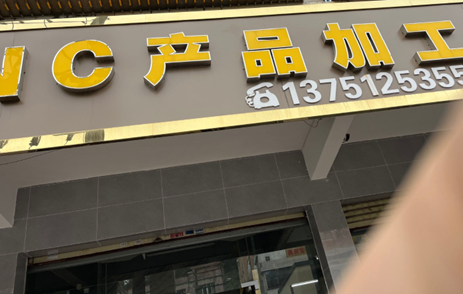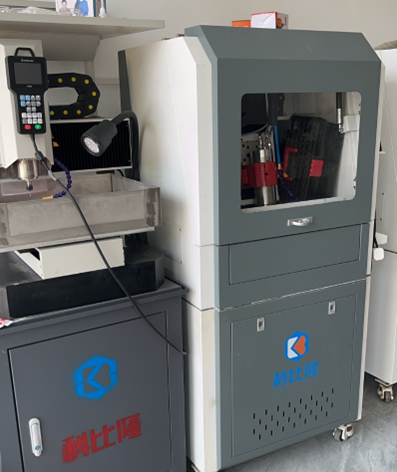As the head of a fashion jewelry company, I am always committed to exploring differentiated product development directions and high-quality manufacturing resources. On July 29, I revisited Meilong Town and Ketang Town in Haifeng, Shanwei, for an on-site investigation, focusing on discovering new processing techniques and equipment while brainstorming how to leverage these resources to create unique competitive advantages for our products.
I. Meilong Town: Discoveries in CNC Mirror Polishing and Precision Stainless Steel Castings

Meilong Town is renowned for its jewelry manufacturing industry, boasting a mature accessory market and a cluster of factories. However, this visit revealed a high vacancy rate in the wholesale market, with only a few stalls near the entrance remaining operational. The primary goal of this trip was to identify a CNC mirror-polishing supplier, and we successfully connected with a specialized manufacturer. Key highlights include:
- Process Advantages: Capable of mirror-polishing rings, pendants, bracelet components, and other irregular curved surfaces, breaking through the limitations of traditional flat-surface processing. The finish rivals that of real gold processing, offering greater design flexibility.
- Collaboration Value: A trial quote for an 18×20mm curved pendant came to just ¥3 per piece, ensuring cost control. This opens doors for developing more intricate designs with higher added value.
- Small Minimum Order Quantity (MOQ): Their lathe can process silver components with low MOQ requirements.
- Potential Issue: Another stainless steel accessory supplier was identified, offering products with sharper detailing than market alternatives. However, they appear to be a trader rather than a factory, necessitating further verification of their supply chain reliability.
II. Ketang Town: Innovative Inspiration from Crystal Stone and Digital Engraving Machines
Ketang Town specializes in crystal and gemstone processing, with fewer finished jewelry products. However, we unexpectedly discovered the potential applications of digital engraving equipment:
- Equipment Observations:
– 3D Relief Engraving Machine (¥12,000–15,000): Capable of carving intricate patterns (e.g., Buddha heads, floral motifs) onto spherical or cylindrical surfaces. With a tungsten steel bit replacement, it can also process metals like copper and stainless steel.
– Flat Relief Engraving Machine (¥12,000–15,000): Can engrave relief designs (e.g., animals, Buddha statues, patterns) onto flat gemstones. Similarly, with a tungsten steel bit, it can process metals.
The key advantage is affordability—current CNC equipment in metalworking factories typically costs over ¥80,000.

- Product Development Inspiration:
– Stone Jewelry: At a roadside stall, we observed CNC-engraved crystal animal carvings (e.g., bears). Developing original designs like marine-themed (e.g., 3D dolphins, seashells) or religious motifs (e.g., pendants for Indian clients) with high-precision engraving could fill a market gap. Further research is needed.
– Metal Processing: Testing direct metal engraving for unique relief or textured effects could replace traditional techniques. Combining gemstones with metals in complex forms—such as an S-shaped cylinder with half metal and half stone—could also be explored.
III. Differentiation Strategy: Creating “Unique-to-Us” Products
Based on this visit, the following directions stand out:
- Focus on CNC Mirror Polishing: Develop jewelry with irregular curves (e.g., wave-shaped pendants, geometric bracelets), leveraging mirror finishes for visual impact.
- Stone-Metal Hybrids: Pair 3D crystal animal carvings (e.g., marine series) with metal components for bracelets or pendants, blending natural aesthetics with modern style.
- Religious/Cultural IP: For markets like India, carve religious symbols (e.g., Buddha statues, OM patterns) in stone or combine them with stainless steel inlays for a distinctive look.
- In-House Equipment Testing: Procure a small engraving machine to experiment with detailed metal reliefs, reducing prototyping costs and accelerating innovation.
IV. Next Steps
- Deepen CNC Supplier Collaboration: Provide 3–5 original designs for prototyping to validate complex structures.
- Evaluate Engraving Machine Purchase: Contact suppliers for technical specs and test metal-processing precision and efficiency.
- Market Research: Check platforms like Alibaba International and Amazon to identify gaps in “stone + metal” hybrid designs and religious-themed products.
- Design Pipeline: Build an in-house team or outsource 3D modeling to prepare a library of animal, marine, and cultural IP designs for rapid production.
- This trip reaffirmed that differentiation stems from the fusion of craftsmanship and design. By integrating Meilong’s CNC polishing and Ketang’s stone engraving technologies, we can develop a product line with both technical barriers and market scarcity. The next step is swift action—transforming ideas into physical samples to seize the first-mover advantage.


